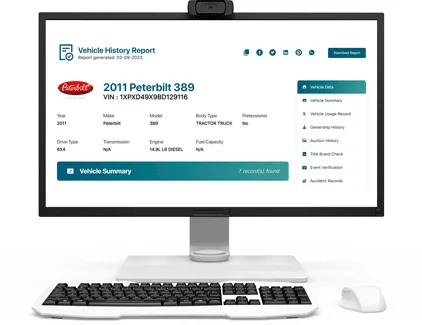As a prospective buyer of a used car, you may have heard the phrase “buyer beware.” This is because it can be difficult to know the complete history of a used vehicle. But with Detailed Vehicle History’s updated vehicle history report design, you can now have a complete picture of a vehicle’s history. Detailed Vehicle History has been a trusted source for vehicle history reports for years. We provide valuable information to buyers, sellers, and even insurance companies. However, we have recently launched an updated design and layout for our reports that provides an even more comprehensive view of a vehicle’s history. In this article, we will be looking at the features of our updated vehicle history report design that help provide comprehensive and concise information to car buyers.
What’s new in Detailed Vehicle History’s reports?
This new design includes several key features that are designed to help buyers make more informed decisions. Here are some of the key features of the new design in our car history reports:
- – Vehicle Description section
- – Vehicle summary
- – Vehicle usage record
- – Ownership History
- – Auction history
- – Title brand check
- – Event verification
- – Mileage records
- – Accident records
- – Damage verification
- – Service & repair records
- – Lien and loan records
- – Maintenance schedule
- – Repair costs
- – Warranty status/coverage
Vehicle Description Section

The first section found on our updated vehicle history report is the vehicle description section. This section of the report provides detailed information about the vehicle, including the make, model, year, and VIN (Vehicle Identification Number). The VIN is a unique 17-character code that identifies the vehicle. This section also includes information about the vehicle’s body style, fuel type, transmission, vehicle type, and drive type.
Vehicle Summary
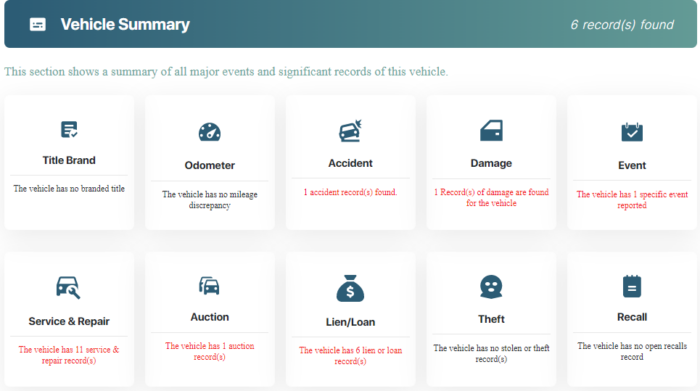
The vehicle summary section of our detailed vehicle history report provides a brief overview of the vehicle’s records that were found in our database. This includes the title brand, odometer readings, accident records, damage history, events, service and repair, auction history, lien and loan records, theft records, open recalls, and more. With this section, car buyers or sellers can instantly verify a vehicle’s condition and determine whether the vehicle they are interested in is a good fit for their needs and budget. These points are analyzed in more detail on further sections of the report, but this section works as a brief of what the user will find on the report.
ALSO READ: How To Do a Vintage Car VIN Lookup
Vehicle usage record

The vehicle usage record section provides information about the type of use the vehicle has had throughout its life, including whether it was used for personal use, commercial purposes, if it was part of a rental company, and more. This information can be helpful in determining the condition of the vehicle.
Ownership history
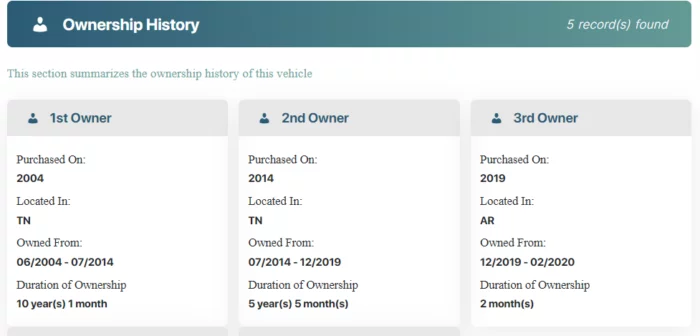
The ownership history section provides information about the number of previous owners, the length of time each owner had the vehicle, and the location where the vehicle was used.
Auction history
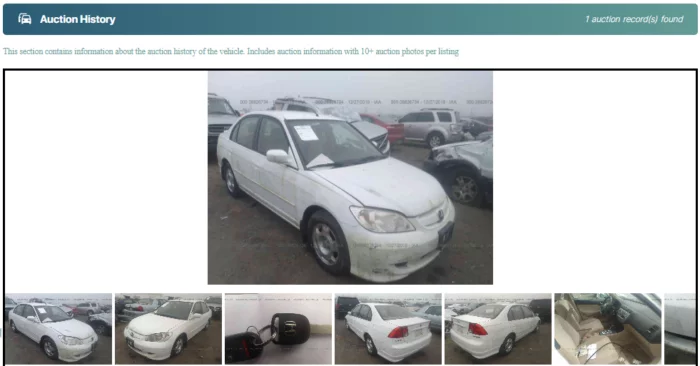
The auction history section provides information about the vehicle’s history at auctions, including whether it was sold at a public or dealer auction, the sale price, the date of sale, the price set for the bid, if the engine runs, and more. This information can be helpful in determining the market value of the vehicle, as well as if the vehicle is properly functioning.
Title brand check
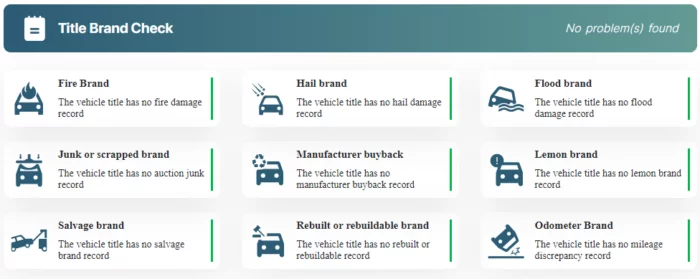
The title brand check section provides information about whether the vehicle has a branded title, such as salvage or rebuilt. A branded title indicates that the vehicle has been in a serious accident or has been declared a total loss by an insurance company. With this, you can identify vehicles that are not roadworthy and unsafe to drive. Cars branded with titles are also really affordable, so with our updated vehicle history report design, you can ensure you are not paying above the fair market value of that vehicle.
Event verification
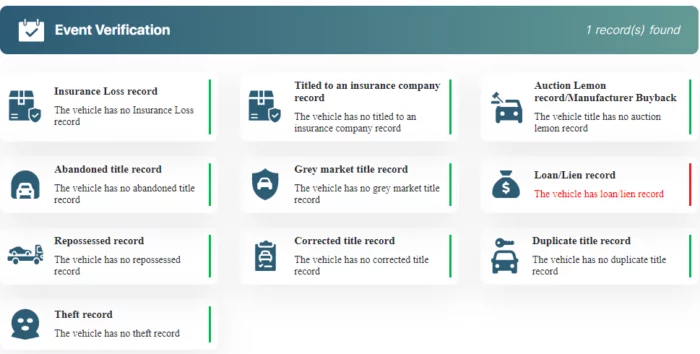
The event verification section provides information about any major events in the vehicle’s history, such as lien and loan records, lemon titles, repossessed records, and more. This information can help to identify any potential red flags related to the vehicle.
Mileage records
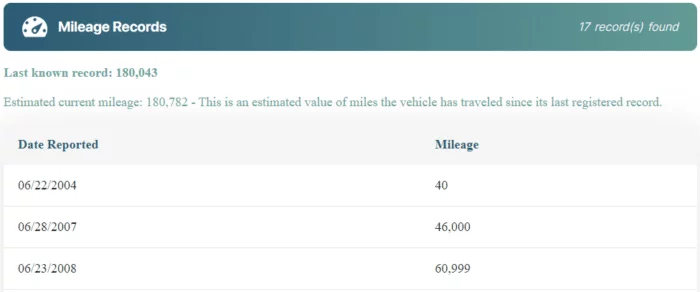
The mileage records section provides information about the number of miles the vehicle has been driven and whether there have been any odometer discrepancies. There are some used car sellers who manipulate their odometer readings . With a record of the mileage readings, you can verify the vehicle’s age before payments are made and expose any car scams.
Accident History

One of the most important features is the inclusion of a complete accident history. This includes any accidents that have been reported to the police, as well as any accidents that have been reported to insurance companies. With accident records, you can easily evaluate the overall reliability of a vehicle and spot potential incidents that can occur as a result of previous damage.
Damage verification
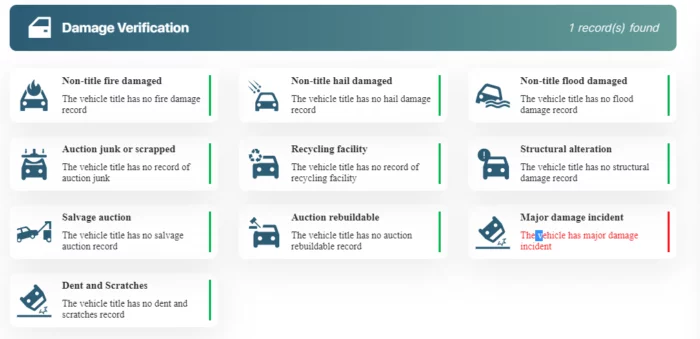
In this section, you will find a full list of all the damages sustained due to collisions, fire, scratches, etc. By getting to know any damages the vehicle has been through, you can better understand the status of the vehicle and any potential issues it may face in the future.
Service and repair records

Another important feature is the inclusion of a detailed service history. This includes information on any repairs or maintenance that have been performed on the vehicle from its first owner until the time of sale. This information can help buyers determine how well the vehicle has been maintained and whether any major repairs or replacements may be necessary in the near future.
ALSO READ: The Role of Car Reports in Preventing Auto Theft and Fraud
Lien and loan records
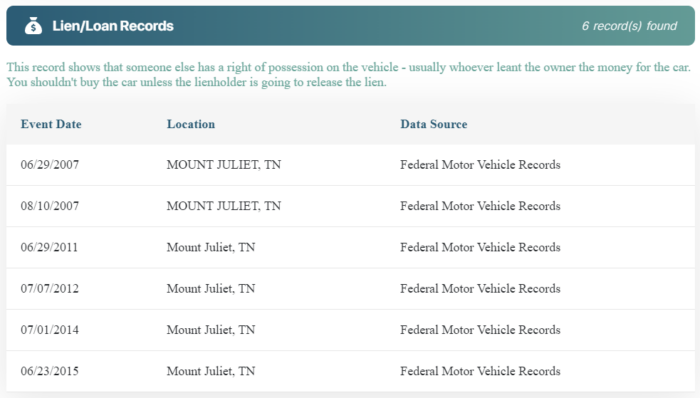
The lien and loan records section of our vehicle history report provides information about any outstanding loans or liens on the vehicle. This information can be helpful in determining the true ownership of the vehicle and whether there are any outstanding financial obligations that need to be settled before transferring ownership. Additionally, it can also help you avoid purchasing a vehicle with an unpaid lien or loan that could result in complications down the road.
Maintenance schedule

Another feature of our vehicle history report design is the maintenance schedule section. This section provides information about the manufacturer’s recommended maintenance schedule for the vehicle. This information can be helpful in determining whether the vehicle has been properly maintained over the course of its life, and to get to know if there are any repairs that need to be made. Regular maintenance is crucial to the longevity and overall health of a vehicle, so this section can be particularly valuable when assessing the status of the vehicle.
Repair costs
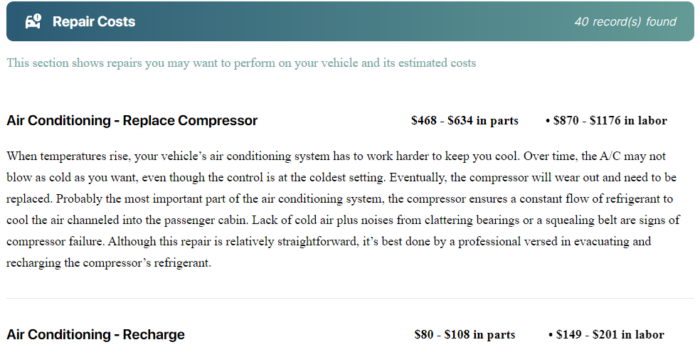
Worried about how much it would cost to repair a damaged vehicle you are interested in? In this section of our report, we provide detailed information on the repairs you may want to make to your vehicle and the estimated cost for each. This way, you will be able to easily identify what vehicle parts need to be repaired or replaced and how much you would spend on each part.
Warranty status/coverage
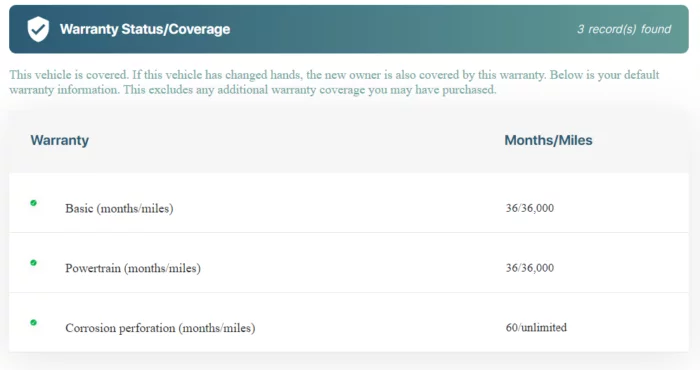
If you are worried about a vehicle’s warranty status before purchase, you can easily find warranty information with Detailed Vehicle History. In this section, you will find information on the length of the vehicle’s warranty and the vehicle parts covered.
Overall, the new design of DVH’s vehicle history reports provides a much more comprehensive picture of a vehicle’s history. This can be extremely helpful to anyone who is considering buying a used car. By providing detailed information on accidents, service history, and title history, buyers can make more informed decisions and avoid potential problems down the road.
But what about sellers? How can they benefit from DVH’s updated design?
The answer is simple: by providing potential buyers with a comprehensive vehicle history report through a VIN check, sellers can increase the value of their vehicle and make it more attractive to potential buyers. In fact, many buyers may be willing to pay a higher price for a vehicle that comes with a detailed history report, as it provides added peace of mind and reassurance that they are making a wise purchase. At the same time, dealerships can prove to their customers that they care about transparency in the transactions when providing a vehicle history report that uncovers the full history of any vehicle.
Insurance companies can also benefit from DVH’s vehicle history reports. By providing detailed information on a vehicle’s history, insurance companies can better determine the risk associated with insuring a particular vehicle. This can help them to set more accurate premiums and avoid potential losses.
In summary, the launch of DVH’s updated vehicle history report design is a significant development in the world of used car sales. By providing a more comprehensive view of a vehicle’s history, buyers, sellers, and insurance companies can all benefit. Whether you are in the market for a used car or simply want to know more about the history of your current vehicle, DVH’s vehicle history reports are a valuable resource that you can rely on.

